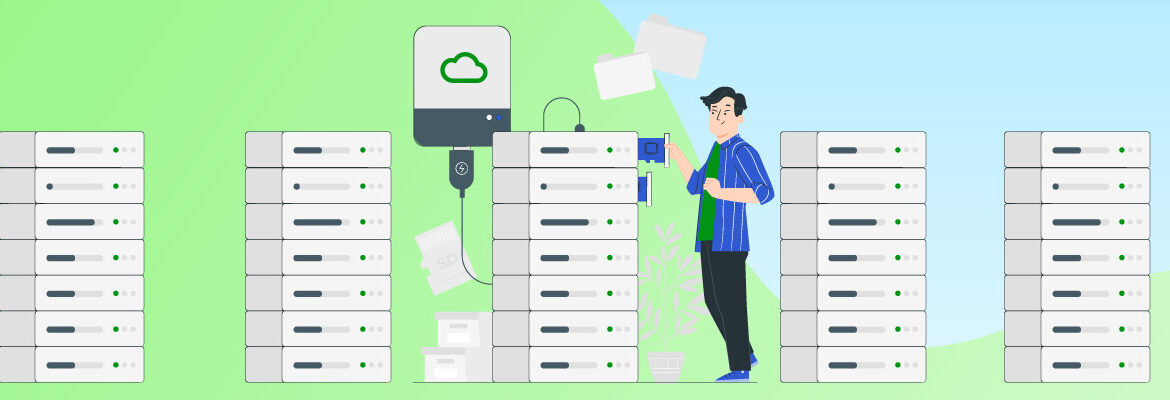A Beginner’s Guide to NAS and SAN Storage

When we talk about storage solutions, we mostly come across SAN and NAS. Even though both SAN and NAS protocols offer steady network-based storage solutions, they differ in the implementation and approach. To decide which one suits your requirements, you should know what they have to offer.
What is NAS?
Network-attached storage, widely known as NAS, is a file-level data storage device that connects to a server for providing secure data access to multiple clients simultaneously. NAS is, by default, a single storage device that works on files over ethernet.
What are the Advantages of NAS (Network Attached Storage)
- Safe & Centralized Data Storage
NAS possesses a simplified architecture and is a self-contained solution. It allows users to securely connect multiple app servers or storage devices to a centralized storage server. - East to Setup, Manage & Operate
NAS doesn’t consume your time to go through heavy processes. With basic technical knowledge, NAS is extremely easy to set up, deploy, manage, and operate. - Access Data From Anywhere
With NAS, it just takes a few clicks to access your data from anywhere, as it comes with its cloud. Its high speed fiber channel network allows it to deliver data within seconds. - Automated Cloud Backup
As mentioned before, NAS has the added advantage of its own cloud. This makes it quite easy for automated cloud backups and prompt data recovery. - Reduces Hardware Costs & Space
Another factor that weighs up the NAS is its infrastructure. It is portable, occupies less space and needs minimum maintenance, thereby saving your hardware costs, time, and energy.
What is SAN?
As abbreviated as SAN, a storage area network is a block-level storage solution that transfers data between storage devices and the servers. SAN processes block data and proffer a low latency; high-performance shared access to the storage. These unique features of SAN make it the most appreciated and well-heard among e-commerce websites and databases
What are the Advantages of SAN (Storage Area Network)
- Faster & Centralized Backup
Data backup is a mandatory yet consuming process. But, SAN works on streamlined data backup processes and has a flexible storage capacity to allow faster and centralized backups. - Advanced Failover Protection
SAN shields you from being another victim to unexpected errors using advanced failover protection technologies that eliminates negative data impacts by responding before time. - Better Disk Management & Utilization
With a consolidated architecture, SAN allows users to efficiently leverage existing storage to its maximum potential, providing better disk management and utilization. - High Availability of Applications & Data
SAN ensures uninterrupted availability at all times. As a result, even under the most pressured environments, your data and applications remain available with minimal downtime. - High Data Transfer Rate
Speed is the most important asset of storage devices, which is given with these SAN storage solutions. They avail high data transfer rates that improve the efficiency of users’ workflows. - No Bandwidth Hassles
Bandwidth improvement is the key benefit of SAN. It can deal with huge amounts of traffic and eliminate bottlenecks, if any.
Which is the Better Option to Choose I.E. NAS Or SAN
Both SAN and NAS serve different use cases, and so it is for users to decide which one suits their requirements. For example, NAS suits itself in a simple interface to share, centralize, and consolidate. However, while working on high-performance environments and high-speed traffic websites, it is better to opt for SAN. Hope this is helpful!



